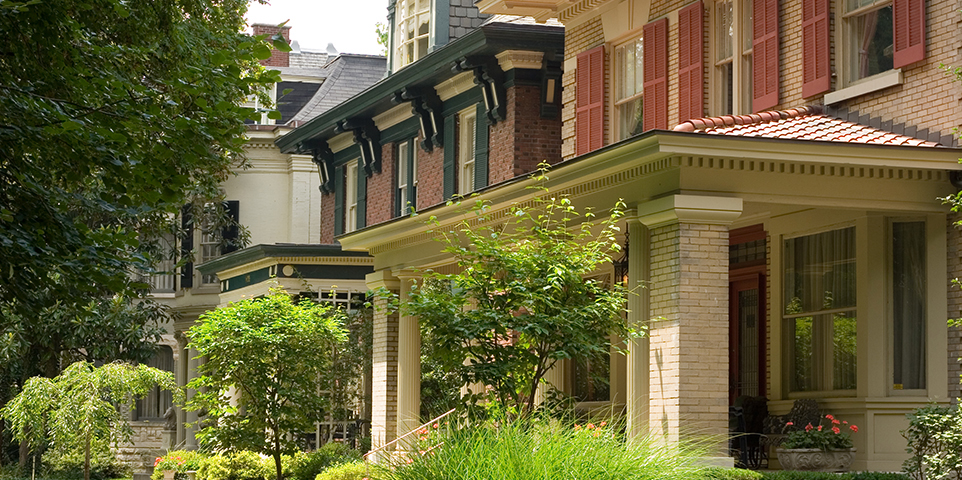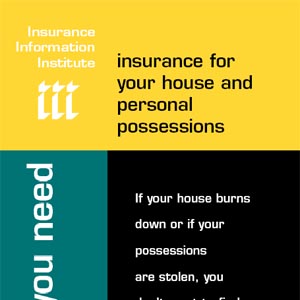MEMBERSHIP
AMPLIFY
EN ESPAÑOL
Connect With Us
- Popular search terms
- Automobile
- Home + Renters
- Claims
- Fraud
- Hurricane
- Popular Topics
- Automobile
- Home + Renters
- The Basics
- Disaster + Preparation
- Life Insurance


Download a PDF version of this brochure.
If your house burns down or if your possessions are stolen, you don't want to find out that your homeowners insurance policy pays less than you thought it would.
The information in this brochure can help you avoid such unpleasant surprises.
The amount of insurance you buy should be based on rebuilding costs, not the price of your home. The cost of rebuilding your house may be higher (or lower) than the price you paid for it or the price you could sell it for today.
Your insurance agent or company representative generally can calculate rebuilding costs for you or you can hire an appraiser to do the job.
Your local real estate agent will be able to give you the names of appraisers.
The cost of rebuilding your house is based on local construction costs and the kind of house you own. This includes the type of exterior wall construction – frame, masonry or veneer; the square footage of the structure; the style – ranch or colonial, for example; the number of bathrooms and other rooms; the type of roof and the materials used; and whether it was custom built. Other things that affect the rebuilding cost are an attached garage, a fireplace, exterior trim and special features, like arched windows.
A good way to get a ballpark estimate of the cost of rebuilding is to calculate the square footage and multiply it by local building costs per square foot for your type of house. For example, suppose your home is 2,000 square feet (1,200 square feet on the ground floor and 800 on the second floor) and that building costs in your community and for your type of house are $80 per square foot. The cost to replace your home would be approximately $160,000. You can ask a real estate agent or appraiser for average building costs in your area.
Few homes are totally destroyed by a disaster, but yours could be one of those few. If it's insured for less than the rebuilding cost, you run the risk of not having enough money to replace it with one of similar size and quality.
Make sure your insurance agent knows about any improvements or additions to your house since you last talked about your insurance policy. If you don't increase your limits to cover the cost of rebuilding a new deck, a second bathroom, a larger kitchen or other improvements that have increased the cost to rebuild your home, you may save a little money on your insurance premium but you risk being underinsured. If you don't have sufficient insurance, your insurance company may only pay a portion of the cost of replacing or repairing damaged items.
Look at your homeowners insurance policy to see the maximum amount your insurance company would pay if your house was damaged and had to be rebuilt.
The limits of the policy typically appear on the Declarations Page under Section I, Coverages, A. Dwelling. Your insurance company will pay up to this amount to rebuild your home.
Some banks require you to buy homeowners insurance to cover the amount of your mortgage. If the limit of your insurance policy is based on your mortgage, make sure it's enough to cover the cost of rebuilding.
If the limits of your policy haven't changed since you bought your home, then you're probably underinsured. Many insurance policies include an inflation guard clause that automatically adjusts the limit to reflect current construction costs in your area when policies are renewed. If your policy doesn't include this clause, see if you can purchase it as an endorsement.
Most policies these days cover replacement cost for structural damage, but it's wise to check with your insurance agent or company representative. A replacement cost policy will pay for the repair or replacement of damaged property with materials of similar kind and quality. The insurance company won't deduct for depreciation -- the decrease in value due to age, wear and tear, and other factors.
If you own an older home, you may not be able to buy a replacement cost policy. Instead, you may have a modified replacement cost policy. This means that instead of repairing or replacing features typical of older homes, like plaster walls and hard wood floors, with similar materials, the policy will pay for repairs using the standard building materials and construction techniques in use today.
Insurance companies differ greatly in how they insure older homes. Some won't insure older homes for the replacement cost because of the expense of re-creating special features like wall and ceiling moldings and carvings. Other companies will insure older homes for the replacement cost as long as the dwelling is in good condition.
If you can't insure your home for the replacement cost or choose not to do so -- in some cases, the cost of replacing a large old home is so high that you might not want to replace it with a house of the same size -- make sure the limits of the policy are high enough to provide you with a house of acceptable size and quality.
Building codes require structures to be built to minimum standards. If your home were damaged, you might have to rebuild it to comply with the new standards. In some cases, complying with the code may require a change in design or building materials and may cost more. Generally, homeowners insurance policies won't pay for the extra expense but insurance companies offer an endorsement that pays a specified amount toward these costs. (An endorsement is a form attached to an insurance policy that changes what the policy covers.)
An extended replacement cost policy will pay a certain percentage over the limit to rebuild your home -- 20 percent or more depending on the insurer -- so that if building costs go up unexpectedly, because there's a shortage of building materials or construction workers, for example, you will have extra funds to cover the bill.
Some companies offer a guaranteed replacement cost policy that will pay whatever it costs to rebuild your home as it was before the fire or other disaster, even if it exceeds the policy limit. This gives you protection against sudden increases in construction costs but it generally doesn't cover the cost of upgrading the house to comply with building codes. A guaranteed replacement cost policy may not be available if you own an older home.
Ask your insurance agent or insurance company representative if your home is in an area that is likely to be flooded. If it is, your agent may be able to help you get flood insurance, or contact the National Flood Insurance Program (NFIP) by telephoning (899) 379-9531 or by accessing its Web site at www.floodsmart.gov. Flood insurance is available from the NFIP.
Include everything you own in your home and in other buildings on the property. Don't forget to list indoor and outdoor furniture; appliances, stereos, computers and other electronic equipment; hobby materials and recreational equipment; china, linens, silverware and kitchen equipment; and jewelry, clothing and other personal belongings.
If you have a claim, the more information you have about the damaged items -- a description of each and the date and place of purchase -- the faster the claim can be settled. Videotape or take photographs of rooms and their contents. Note where and when you bought each item. Write down the brand names and model numbers of appliances and electronic equipment. Add new items as you buy them. Keep receipts with the list.
Be sure you store your home inventory somewhere safe off the premises -- in a bank deposit box or with a neighbor or relative -- so that it isn't destroyed if your home is damaged.
The total is the amount of insurance you would need to replace the contents of your home with new items if everything was destroyed.
The limit of the policy is shown on the Declarations Page under Section I, Coverages, Personal Property. Most companies provide coverage for 50 percent to 70 percent of the amount of insurance on the dwelling. Now compare the Personal Property limit with the total value of the items on your list of personal possessions. If you think you're underinsured, discuss this problem with your insurance agent or insurance company representative.
There are two ways of insuring your personal possessions. If you already have a homeowners insurance policy, find out whether claim payments for damage to your personal property would be based on replacement cost or actual cash value. Check your policy under Section I, Conditions, Loss Settlement, or ask your agent. As with insurance for the structure, a replacement cost policy generally pays the dollar amount needed to replace a damaged item with one of similar kind and quality without deductions for depreciation. An actual cash value policy pays the amount needed to replace the item, minus depreciation.
Suppose, for example, a fire destroyed a five-year-old TV set. If you had a replacement cost policy for the contents of your home, the insurance company would pay to replace the TV set with a new one. If you had an actual cash value policy, the company would pay only a percentage of the cost of a new TV set because the TV had been used for five years and would be worth less than its original cost.
This information is in Section I, Personal Property, Special Limits of Liability. Some insurance companies also place a limit on what they'll pay for computers.
If the limits are too low, consider buying a special personal property "endorsement" or "floater." (A floater is a form of insurance that allows you to insure valuable items separately.)
Every effort has been made to define special terms whenever they are used in the text. For your convenience, however, several common insurance terms are defined below as well.
The current value of property measured in cash, usually arrived at by taking the replacement cost and deducting for depreciation brought about by physical wear and tear, age and other factors.
A written form attached to a policy that alters the policy's coverage, terms or conditions.
Homeowners policies that cover part, or all, of sudden increases in construction costs that push the expense of rebuilding above the policy limit. An extended replacement cost policy pays a certain percentage above the limit. A guaranteed replacement cost policy pays to rebuild a home as it was before the disaster without regard to the limit.
A policy that applies to movable property whatever its location, commonly used to insure items that have a special value such as expensive jewelry.
Insurance that pays for the cost of replacing the home without deduction for deprecation, but limited by the dollar amount displayed under Section 1, Coverages, A. Dwelling on the Declarations Page of the policy.
Insurance that pays the dollar amount needed to replace damaged personal property with items of similar kind and quality without deducting for depreciation.